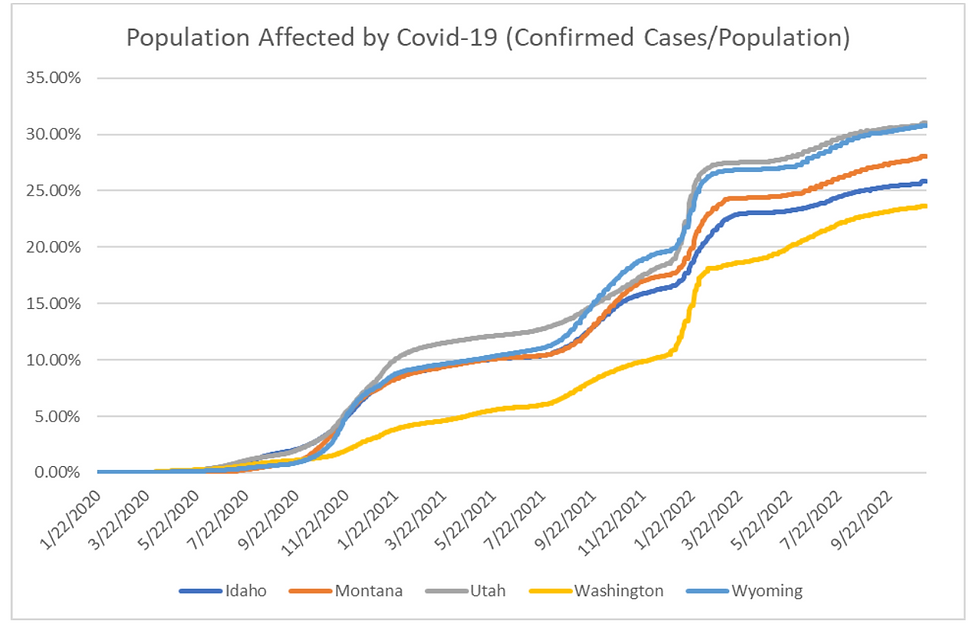The policies and politics of COVID-19 in the Mountain States
- Madilynne Clark

- Jan 24, 2023
- 2 min read
Updated: Jul 21, 2023

Starting in January 2020, reports of SARS-CoV-2 (COVID-19) entering the United States were a reality, and no longer an international talking point. Some of the first U.S. cases entered Washington State and then spread throughout the country. By mid-March, all the western states had confirmed COVID-19 cases and the United States issued stay-at-home guidelines soon after. From the onset of the pandemic, every state in the union approached the health emergency with different strategies.
Three years after initial COVID-19 containment measures were implemented, many state and local organizations have yet to conduct an after-action report. Quarantine guidelines, mask mandates, school closures, work shut-downs, and contact tracing were some of the many efforts conducted by state governments to slow the spread of the COVID-19 virus. But did any policies actually help stop the spread?
Throughout the United States, federal, state, and local-level governments addressed the growing concerns around the deadly virus with a myriad of attempts. Ranging from borderline totalitarian control to more laissez-faire approaches, each state followed its own trajectory, and the results are mixed. Even international comparisons of COVID-19 management by country have yielded little information.
Despite early promises of politicians and bureaucrats, one individual regulation has not completely controlled the spread, nor has one effort resulted in complete eradication. Further complicating matters are the negative consequences from COVID-19 regulations – education deficiencies, economic turmoil, supply shortages, and mental health challenges. Ignoring the results of COVID-19 containment measures by state only sacrifices future healthcare needs to soothe many politicians who are unwilling to acknowledge wasted efforts. Acknowledging regulatory failures and identifying areas of success can guide policy makers and health workers in future disease management scenarios.
This report assesses the efficacy of the containment measures used by governments throughout the west from February 2020 to November 2022. Using an international database of COVID-19 regulations, compiled by a team of Oxford researchers (OxCGRT), this report analyzes the COVID-19 containment measures of Idaho, Montana, Utah, Washington, and Wyoming.








Comments